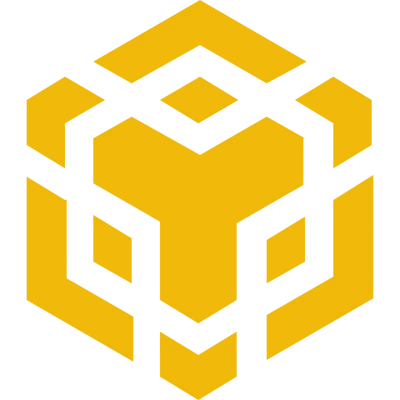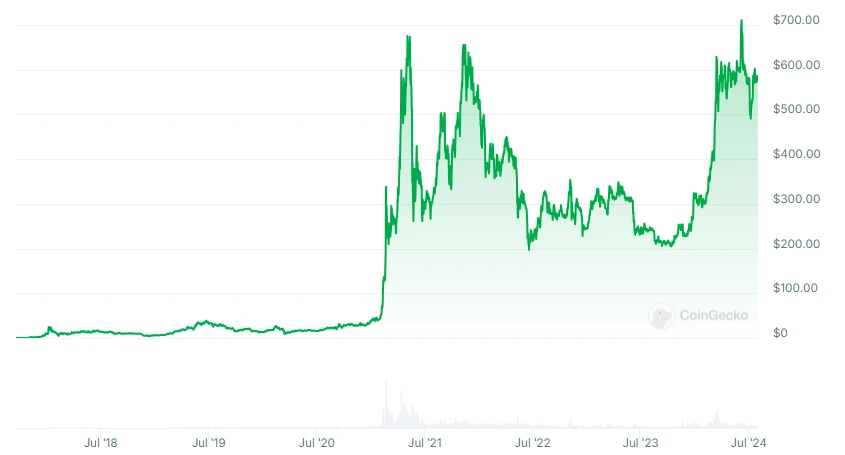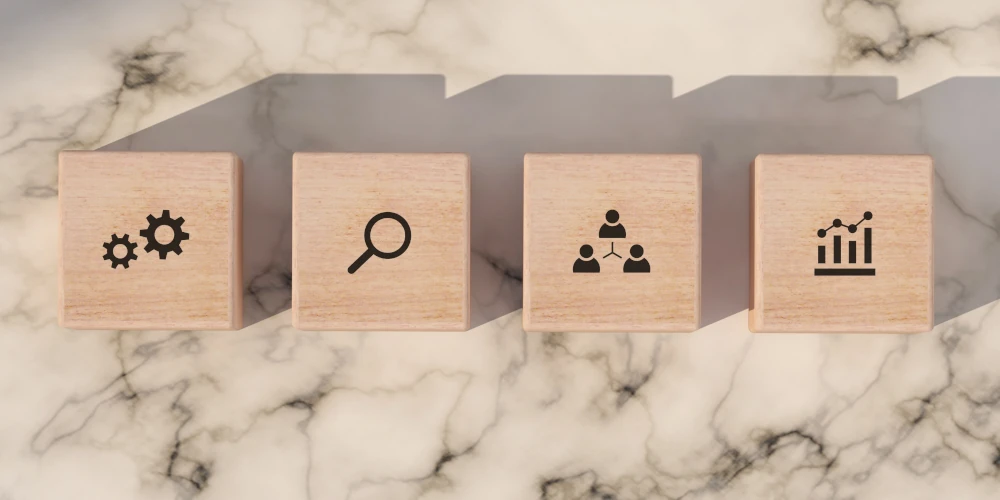Introduction
In fact, Binance Smart Chain (BSC) has emerged as a high-performance blockchain network that offers a range of features and benefits.
As an investor or enthusiast in the cryptocurrency space, it is crucial to understand the key aspects of this project and its unique offerings.
This comprehensive guide will provide you with all the essential information you need to know about Binance Smart Chain, from its inception to its features and advantages.
As like always, enjoy your reading!
About Binance Smart Chain (BSC)

Binance Smart Chain (BSC) is a blockchain network developed by Binance, one of the leading cryptocurrency exchanges in the world. It was designed to provide a high-performance infrastructure for decentralized trading, building decentralized applications (DApps), supporting smart contracts, and enabling cross-chain interoperability.
BSC operates alongside Binance Chain (BC), which is Binance’s native blockchain network.
The unique feature of BSC is that it combines the high transaction throughput of project network with the smart contract functionality of Ethereum, making it an attractive choice for developers and users alike.
The Launch of Binance Smart Chain
Binance Smart Chain was officially launched in September 2020.
The idea behind its creation was to offer a cross-chain network that leverages the advantages of both Binance Chain and Ethereum.
Binance community recognized the need for a blockchain that could handle high transaction volumes, support smart contracts, and provide a seamless user experience.
How Binance Smart Chain Works
To understand how project works, it is essential to grasp the concept of Binance Chain (BC) first.
BC is the native blockchain of Binance, primarily used for decentralized trading and issuing digital assets. It operates with high throughput and low latency.
Binance Smart Chain expands upon the capabilities of Binance Chain by adding support for smart contracts and other decentralized finance (DeFi) features.
It achieves this by implementing the Ethereum Virtual Machine (EVM), which allows developers to port their Ethereum-based projects to BSC with ease.
This compatibility enables users to access a wide range of tools and decentralized applications (DApps) that were previously only available on Ethereum.

Indeed, Binance Smart Chain functions as a financial hub.
It is where communication between other ecosystem chains takes place.
The key role of Binance Smart Chain is invaluable.
Key Features of Binance Smart Chain
Full Compatibility with Other Blockchains
Binance Smart Chain is not just a standalone blockchain; it is a dual-chain system that works in harmony with other blockchains.
It offers full compatibility with Ethereum, allowing developers to port their projects seamlessly from Ethereum to BSC. This compatibility enables users to access a broader range of decentralized applications and services.
Proof of Staked Authority (PoSA)
Binance Smart Chain uses a consensus mechanism called Proof of Staked Authority (PoSA). This hybrid consensus model combines elements of delegated proof-of-stake (DPoS) and proof-of-authority (PoA).
Validators on the network stake their Binance Coin (BNB) to become part of the consensus process. The more BNB a validator stakes, the more chances they have to create blocks and earn rewards. This consensus mechanism ensures the security and integrity of the network.
Binance Coin and Binance Smart Chain
Binance Coin (BNB) is the native cryptocurrency of Binance Smart Chain.
It plays a vital role in the functioning of the network. BNB is used for transaction fees, staking, and participating in on-chain governance.
Users can stake their BNB to earn rewards and participate in the decision-making process for protocol upgrades.
Token Economics and Burn Mechanism
Unlike many other cryptocurrencies, BNB has a deflationary tokenomics model. BNB tokens are periodically burned, reducing the total supply and potentially increasing the value of each remaining token.
This burn mechanism occurs when BNB is used to pay for transaction fees or participate in token burns initiated by the Binance team. The burning process will continue until the total supply of BNB reaches 100 million.
Binance Smart Chain and Binance Chain (BC)
Binance Smart Chain and Binance Chain are two interconnected blockchain networks, each serving different purposes.
While Binance Chain focuses on decentralized trading and issuing digital assets, Binance Smart Chain expands upon those capabilities by adding support for smart contracts, decentralized applications, and cross-chain interoperability.
Binance Smart Chain can be seen as a complementary network to Binance Chain, offering users the best of both worlds. It combines the high transaction throughput of Binance Chain with the programmability and compatibility of Ethereum.
This dual-chain system provides users with a more diverse and versatile ecosystem to explore.
Binance Coin (BNB) Price in Depth

In the case of Binance Coin, there is a lot to analyse.
The token itself is used by the largest CEX exchange, Binance.
If you don’t know exactly what I’m writing about, check out this article about comparing CEX exchanges, i.e. centrally managed exchanges.
3 bull market and 2 bear market. One would like to say that it is a perfect example of a token for price analysis. Well, because it’s actually true!
1st Bull Market
the lowest price is the price immediately after the token is made public on exchanges.
This price was $0.039 per unit in mid-October 2017.
In retrospect, Binance Coin has shown that it would have been an excellent investment at the time, but more on that in a moment.
Since October 2017, there has been a dynamic price increase. This increase continued until the end of 2017 and stopped at a price of $24.37 per unit.
Let me remind you that at the beginning of October it was USD 0.039 per unit.
Also within 3 months the increase was huge! Woah!
What an increase…
Well, after such dynamic growth there always comes a strong bear market.
1st Bear Market
The bear market lasted almost 1 year. Almost perfect.
Interestingly, the price dropped to nearly $4 per unit.
The most dynamic decline could be noticed in the first month, when the price reached a price close to $4.50. The bottom of the market and the next few months were in a sideways trend.
This conclusion can be drawn after the price at the end of 2018 fell again to the local price bottom, $4.50 per unit.
This will probably surprise some of you… I think it was a really low decline when it comes to cryptocurrencies.
2nd Bull Market
Interestingly. In the case of Binance Coin, the bull market began after the bear market ended. This is interesting because the price of the asset usually enters a sideways trend because the market is bearish.
Meanwhile, in this case, the price jumped to $13.50 per unit a year after the bottom. That’s three times the bottom price.
Along the way, the price peaked at around $39 per unit at the time.
Well, a very strong upward trend returned only in March 2020. Then the price rose very steadily until June 2021. The price at the time was $677 per unit.
The bull market did not end because it lasted until November 2021, but the price after the correction is around $655 per unit. Well, the bear market has come.
2nd Bear Market
Strong cryptocurrencies are usually indicated by how much the price drops in the worst moments, such as a bear market.
And Binance Coin showed strength. The price fell for less than 7 months. It bottomed out near $200. From a high of $677, it’s not that big of a loss.
Of course, when it comes to the cryptocurrency market!
And it’s time for another boom…
3rd Bull Market
The sideways trend on this cryptocurrency has been ongoing since mid-2022. Let me show you the numbers to prove it. These never lie.
At the end of 2022, i.e. theoretically during the bear market, the price reached $225 per unit.
In April 2023, it was at $350 per unit…
And there was no strong boom. The price corrected and returned to around $200 in mid-October 2023. This is the price bottom from the bear market.
From this point on, however, there is only a bull market!
A real Boom
Suffice it to mention that from October 2023 to June 2024, the price was at its All Time High.
It is currently $717 per unit.
From two hundred dollars, that’s a triple increase!
Do you recognize anything yet? Do you remember what I wrote earlier?
History never repeats itself, because there are different circumstances, although…
Price increases are almost identical to the period of the year of the lowest bear market price.
I don’t know what will happen next.
You can be only sure about one thing: the market is unpredictable.
I will stick to this assumption and I am curious how the current bull market will end.
Benefits and Problems
Benefits

This chain offers several advantages that have contributed to its growing popularity in the cryptocurrency space. These advantages include:
High Transaction Throughput
Project can handle a significantly higher number of transactions per second compared to Ethereum, making it ideal for applications that require fast and efficient transaction processing.
Low Transaction Fees
Transactions on Binance Smart Chain are generally more cost-effective compared to Ethereum, thanks to its lower gas fees.
Compatibility with Ethereum
Chain is fully compatible with Ethereum, allowing developers to easily port their projects from Ethereum to BSC without significant modifications.
Cross-Chain Interoperability
Binance Smart Chain enables seamless asset transfers and communication between different blockchain networks, providing users with more flexibility and liquidity options.
However, it is important to consider the potential disadvantages of Binance Smart Chain as well.
Problems

Centralization Concerns
BSC has faced criticism for its centralized nature, as it relies on a limited number of validators to maintain network security. This centralization raises concerns about potential vulnerabilities and single points of failure.
Risk of Rugpulls
Binance Smart Chain has experienced a significant number of rugpulls, where projects suddenly abandon their commitments, leaving investors with substantial losses. This risk highlights the importance of conducting thorough due diligence before participating in any project or investment on the platform.
Use Cases of Binance Smart Chain

Binance Smart Chain has gained traction in various areas of the cryptocurrency ecosystem, offering a range of use cases and applications. Some notable examples include:
DeFi (Decentralized Finance) Applications
Binance Smart Chain has become a popular platform for decentralized finance applications, offering users access to a wide range of DeFi protocols, including decentralized exchanges (DEXs), lending platforms, yield farming, and liquidity pools.
These applications leverage the high transaction throughput and low fees of BSC to provide users with efficient and cost-effective financial services.
Cross-Chain Interoperability
Binance Smart Chain supports cross-chain interoperability, allowing users to transfer assets between different blockchain networks seamlessly.
This interoperability enables users to take advantage of the features and benefits offered by multiple blockchains, expanding their options for asset management and investment strategies.
DApps (Decentralized Applications)
Binance Smart Chain provides developers with a robust platform for building decentralized applications and deploying smart contracts.
By leveraging the EVM compatibility of BSC, developers can easily port their Ethereum-based projects to Binance Smart Chain, gaining access to a larger user base and lower transaction fees.
Token Swaps and Asset Transfers
Binance Smart Chain enables users to swap tokens and transfer assets between different blockchain networks.
This cross-chain functionality offers users greater flexibility and liquidity options, allowing them to easily move assets and take advantage of different opportunities in the cryptocurrency market.
Getting Started with Binance Smart Chain

Getting started with Binance Smart Chain is relatively straightforward. Here are the essential steps:
Setting up a Wallet
To interact with Binance Smart Chain, you will need a compatible wallet that supports BSC. Two popular options are Trust Wallet and MetaMask.
You can create a wallet on either of these platforms and configure it to connect to the project.
Interacting with DApps on Binance Smart Chain
Once you have set up your wallet, you can explore and interact with various decentralized applications on Binance Smart Chain. These DApps offer a range of services, including decentralized exchanges, yield farming platforms, and NFT marketplaces. You can connect your wallet to these DApps and start using them to trade, invest, and participate in various DeFi activities.
Exploring Binance Smart Chain Explorer
The Binance Smart Chain Explorer is a powerful tool that allows you to view and track transactions, addresses, and smart contracts on the Binance Smart Chain network.
It provides valuable insights and transparency into the activities happening on BSC. You can use the explorer to monitor your transactions, verify smart contracts, and explore the broader ecosystem.
Future of Binance Smart Chain

Binance Smart Chain has an ambitious roadmap for future developments and enhancements. The Binance team is continuously working on improving the network’s scalability, security, and interoperability. Some of the key areas of focus for future developments include:
Layer 2 scaling solutions to further increase transaction throughput and reduce fees.
Enhanced cross-chain interoperability to facilitate seamless asset transfers between different blockchain networks.
Continued support for decentralized finance applications, including new protocols and features.
Ongoing efforts to address centralization concerns and enhance network security.
In the future, Binance Smart Chain is likely to play a significant role in shaping the future of decentralized finance and cross-chain interoperability.
By providing users with a high-performance infrastructure and a range of innovative features, Binance Smart Chain has the potential to drive the adoption of blockchain technology and empower individuals to take control of their financial future.
Additional Resources
To learn more about project and explore related topics, you can refer to the following resources:
Project Official Website, Official Whitepaper, or Binance Chain Explorer.
All these resources will allow you to get to know Binance Smart Chain even better.
Of course, I encourage individual visits and exploration. Nothing will convince you to make an investment decision better than understanding what this technology actually involves.
Conclusion
Ecosystem Binance Smart Chain has quickly gained recognition and popularity within the cryptocurrency ecosystem.
Its high transaction throughput, low fees, and compatibility with Ethereum have attracted developers, users, and investors alike.
The platform’s ability to support decentralized finance applications, cross-chain interoperability, and smart contract functionality positions it as a significant player in the industry.
Beside that, who don’t knows Binance in cryptocurrency space? Exactly!

Leave a Reply
You must be logged in to post a comment.